TABLE OF CONTENTS
Like so many other components, motherboards, too, come in different sizes and form factors.
They might all have the same core functions (or purpose, rather), but they can still vary wildly when it comes to the features they offer and the ways in which one can use and harness their potential.
And, well, they vary in price, too, which is also something one ought to keep in mind.
Still, if we focus solely on their dimensions — without taking any other parameters into consideration — the differences between them aren’t all that big.
In fact, they can mostly be condensed and categorized into just a single category: expandability.
Motherboard Sizes Explained — A Complete Primer
There are various motherboard sizes and formats, but the three most prevalent ones — i.e., the ones readily available on store shelves and most often bought by both “casual” users and those who are anything but — are the following: ATX, microATX (or mATX, for short), and ITX.
The first thing you’ll notice is the difference in size.
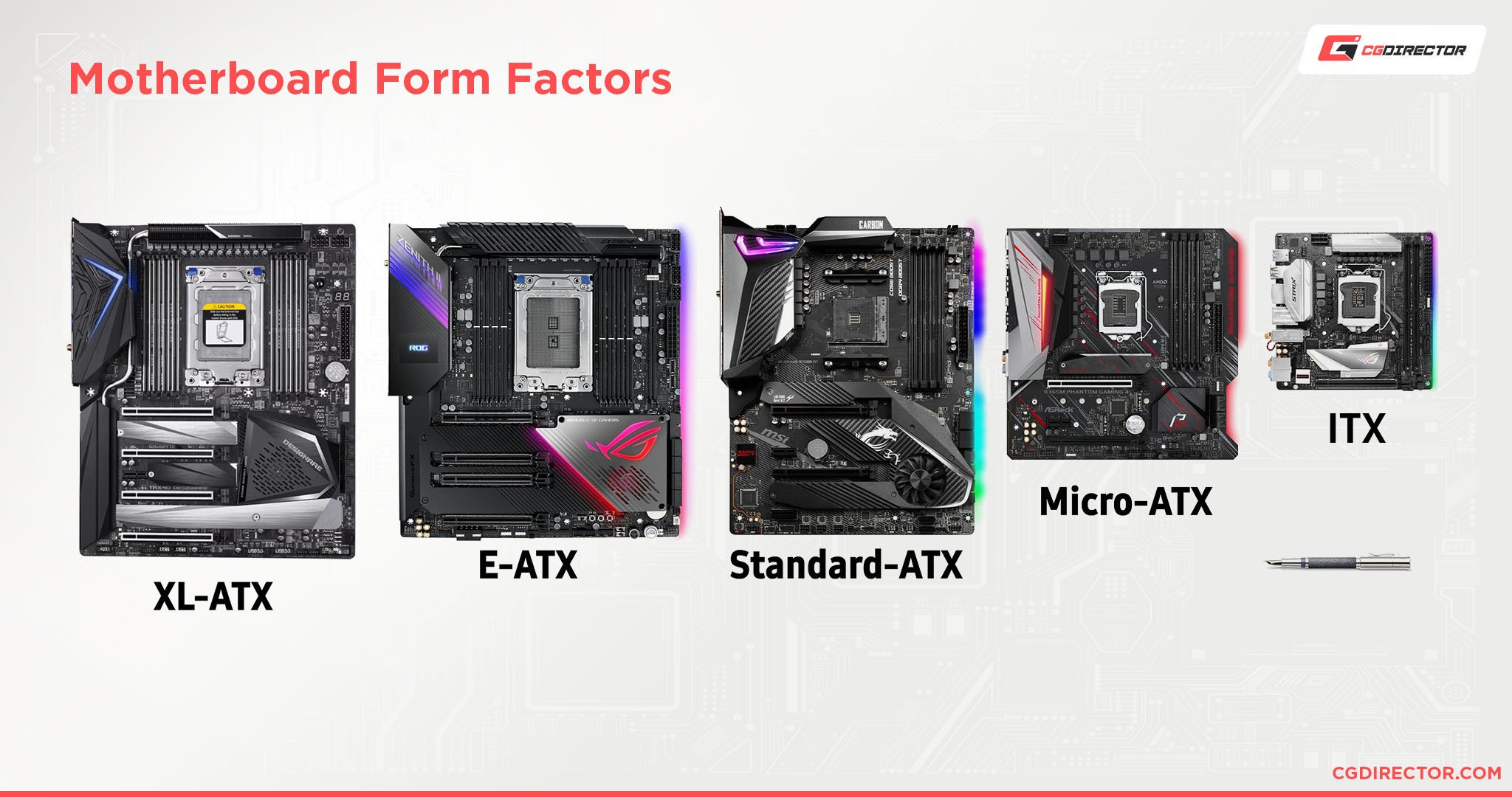
Motherboard Size Comparison Chart – XL-ATX, E-ATX, ATX, M-ATX, ITX
Compared to an ATX motherboard, an ITX one is petite and minuscule, almost laughably small. mATX is square in the middle — not too big but certainly not too small either.
Their size, naturally, affects many different things, the most important one being their number of ports/slots and, in some cases, features.
The biggest motherboards will obviously have the most potential in terms of their connectivity and expandability, but most folks don’t really need a particularly vast array of ports.
Both casual and professional users alike will almost always use just a single PCIe x16 slot (for their GPU), two RAM slots, and potentially a few SATA connections and fan headers for any additional cooling.
Those whose livelihood is tightly connected to their computers, however, may want to have more options than what we’ve just mentioned and, well, it’s easy to understand why.
Some users might need a series of expansion cards, all of which require additional PCIe slots.
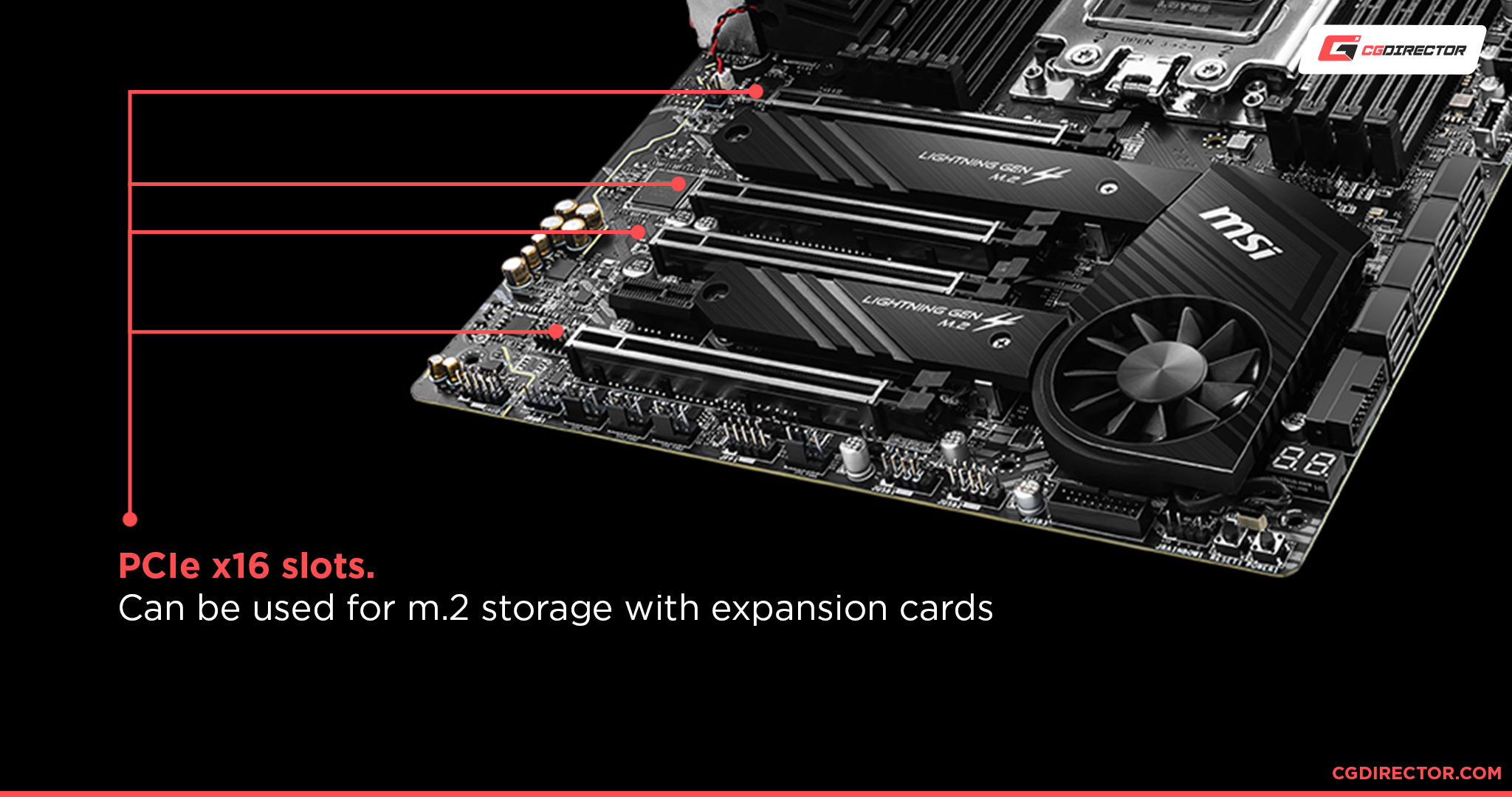
Others might want as much RAM as they can possibly get, in which case having more RAM slots would be much preferred.
And, well, one can never have enough storage (and options for storage expansion), what with today’s most popular games and programs taking up heaps of gigabytes.
Whether you’ll go with one format or the other heavily depends on your needs and personal preference.
The format itself changes little else; there’s really no reason to go with a bigger board if you’re not going to harness its benefits.
Then again, having more options in terms of connectivity and expansion might come in handy further down the line, and that’s definitely something you should be aware of when making your purchasing decision.
Motherboard Format Differences — ATX vs. mATX vs. ITX
Let’s go over the biggest differences between these three mainstream motherboard formats:
| ATX | mATX | ITX | |
|---|---|---|---|
| DIMENSIONS | 12” x 9.6” [305mm x 244mm] | 11.2” x 8.2” [284mm x 208mm] | 6.7” x 6.7” [170mm x 170] |
| RAM SLOTS | 2/4 | 2/4 | 2 |
| PCIe SLOTS | Up to 7 | Up to 4 | 1 |
| PRICE | Average | Least expensive | Most Expensive |
A change in size brings with it a change in expandability and flexibility. The smallest motherboards, naturally, have the least number of ports, although they still have the right amount for most consumers.
It all boils down to what you need right now, what you might need in the future, and how much money you’re willing to spend.
ITX boards almost always come at a premium.
They’re the hardest to manufacture and, therefore, have to be sold at a premium. They’re still somewhat niche although, in all fairness, they have gotten a lot more mainstream over the years and are now sort of viewed as a “high-end” option.
There’s something inherently alluring in a small form factor PC — one that doesn’t compromise on performance.
ATX, on the other hand, is the least enticing format. These boards are comparatively large which may or may not be a dealbreaker, depending on what you’re after and how big of a PC you’re looking to build.
One thing, however, cannot be denied: they’re the least limiting of these three options when it comes to what you can do with them and how much potential they have in terms of expandability and future upgrades.
That being said, you probably don’t need as many ports and expansion slots as they provide, which is why mATX is almost always the better choice.
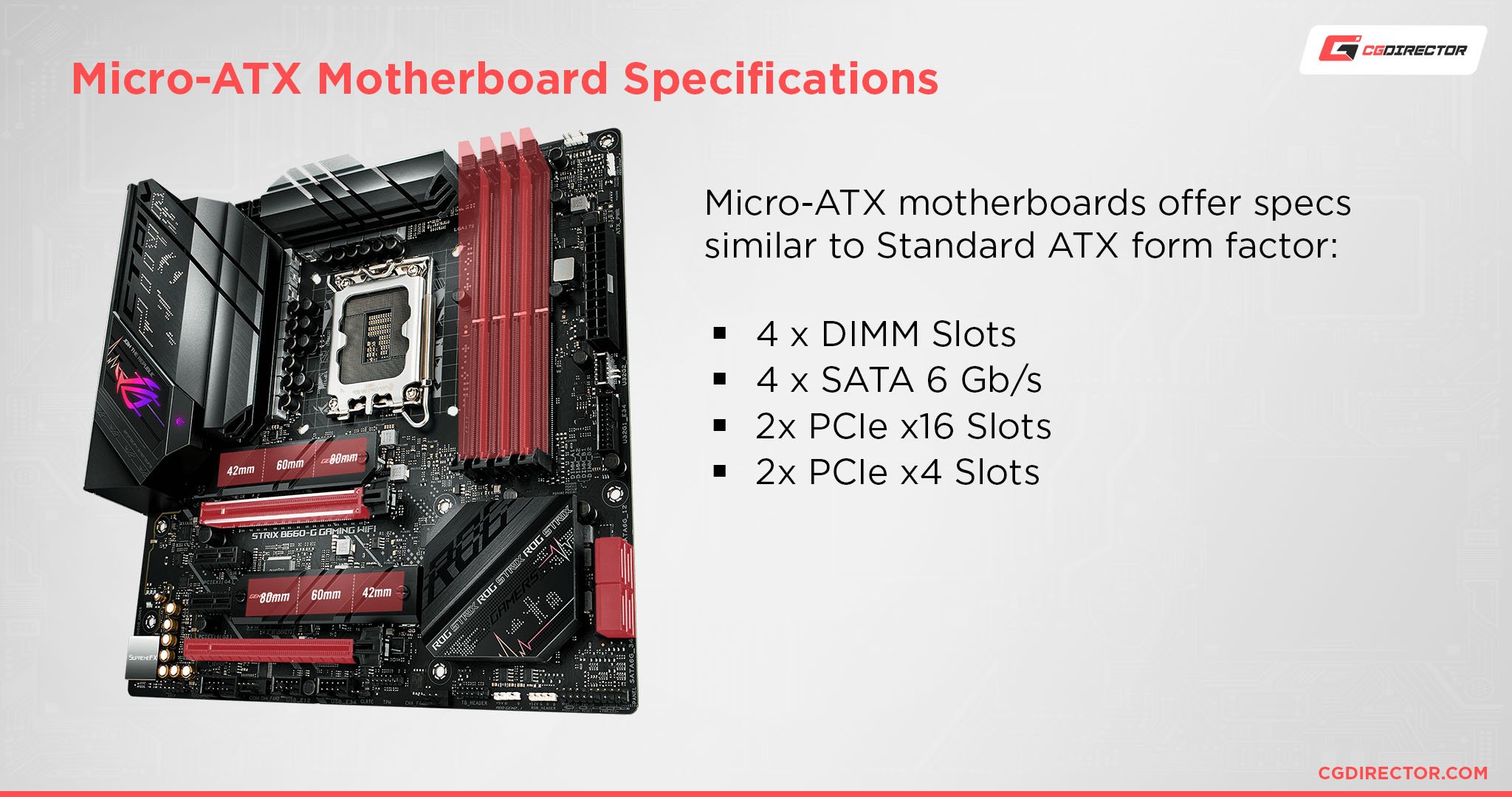
Source: ROG ASUS
mATX is a fair bit shorter while retaining much of the same core functionality. These boards are also a fair bit cheaper and can be found at incredibly alluring prices.
They have everything one might need and are a great option for both budget builders and enthusiasts alike.
Does Motherboard Size Matter?
Well, that depends on your personal preference and the kind of PC you’re looking to build.
As already mentioned, you’re only going to miss out on a bunch of expansion ports by going with a smaller motherboard which may or may not be of any importance to you, depending on the kind of work you do.
We’re only talking about the form factor here, not the chipset, VRM cooling, I/O, build quality, and so on — these things are all hugely important and they can vary in quality regardless of your motherboard’s dimensions.
A high-end ITX board, therefore, is going to offer incredible performance, although it’ll still be limited when it comes to how many ports it can provide — these are physical limitations and they cannot be circumvented.
FAQ
Let’s go over a few questions you might have regarding the three most prominent motherboard formats:
Can I Change the Size of my Motherboard?
Only if you sell your existing motherboard and buy a different sized one. You can’t upgrade or adjust the size of your motherboard post-purchase in any way.
You can extend its functionality through any PCIe-based expansion card, but that’s about it.
Does Motherboard Size Affect Performance?
Well, that depends.
If you’re a “regular” user then you really won’t notice any kind of difference when it comes to gaming, content creation, or any relatively intensive workload.
If you’re into overclocking or need every ounce of power your motherboard can provide (for whatever reason), then you really ought to read the following piece.
Can I Use a Small Motherboard Inside a Large PC Case?
You absolutely can! It’ll look a bit weird, but that’s pretty much the only “downside.”
Going for such a pairing doesn’t make a lot of sense, though.
Which Motherboard Size/Format Should I Go With?
That depends solely on your needs and preferences.
If you want a really small computer then you’ll simply have to with ITX — there’s no other option.
If, on the other hand, you want as many ports as you can get, then ATX is the way to go. They are quite a bit larger than mATX and ITX, so just keep that in mind as you’ll need to have a large enough enclosure to accommodate it.
For most people, mATX is the sweet spot, both in terms of connectivity and price.
Will My Motherboard Format Affect My Gaming Performance?
It absolutely won’t. Just make sure it’s compatible with the rest of your components (CPU, GPU, RAM, any potential expansion cards you might have, storage, etc.) and you’ll be good to go.
That being said, higher-end motherboards will allow you to overclock your CPU and RAM (along with many other nifty BIOS-related options) which will result in better performance, both in games and any other workload.
So it all really depends on what you’re after and how much you’re willing to tinker with your PC after you’re done assembling it.
Over to You
Which motherboard format do you prefer and why? Let us know in the comment section down below, and in case you need any help, head over to our forum and ask away!
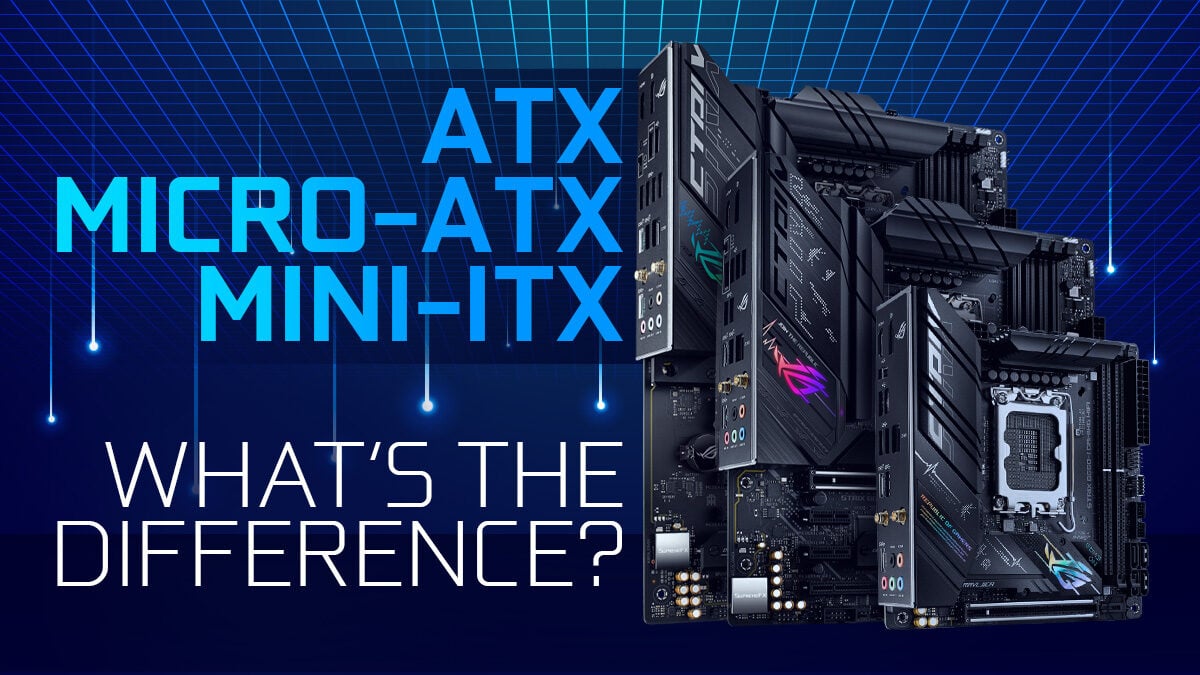
![Where Do You Connect PC Fan PWM Cables To? [Beginner’s Guide] Where Do You Connect PC Fan PWM Cables To? [Beginner’s Guide]](https://www.cgdirector.com/wp-content/uploads/media/2023/12/Where-Do-PWM-Cables-Go-Beginners-Guide-Twitter-1-594x335.jpg)
![How To Connect Front Panel Cables To Your Motherboard [Guide] How To Connect Front Panel Cables To Your Motherboard [Guide]](https://www.cgdirector.com/wp-content/uploads/media/2024/01/How-To-Connect-Front-Panel-Cables-To-Your-Motherboard-Twitter-copy-1-594x335.jpg)
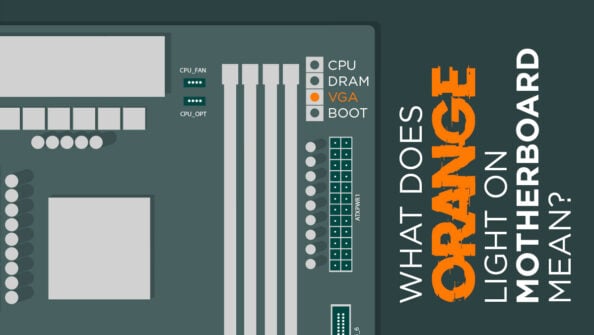
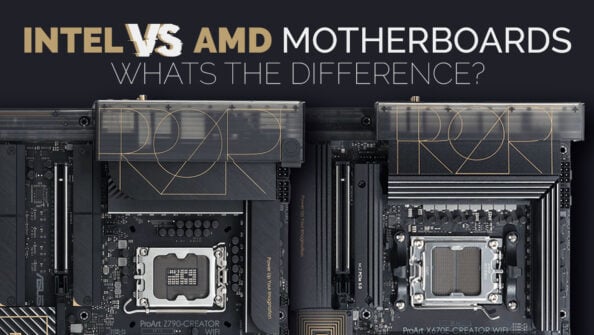

0 Comments